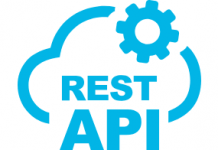In today’s fast-paced,technology-driven world, computer programming and coding skills have become increasingly important. To equip our future generations with the tools they need to succeed, it’s crucial to integrate coding into the K-12 curriculum. This blog explores the benefits of teaching coding in schools and provides a roadmap for educators and policymakers looking to make this valuable addition to their curriculum.

Why Should We Teach Coding in K-12?
a. Digital Literacy: Coding is the literacy of the digital age. Just as reading, writing, and arithmetic are fundamental skills, coding is a crucial literacy skill in the 21st century.
b. Problem-Solving: Coding fosters problem-solving skills. It encourages students to think logically, break down complex problems into smaller, manageable parts, and develop innovative solutions.
c. Career Opportunities: The demand for tech-savvy professionals is on the rise. Teaching coding in K-12 can help bridge the digital skills gap and prepare students for future careers in technology.
d. Creativity: Coding is a creative endeavor. It empowers students to express their ideas and create digital solutions, encouraging their creativity and innovation.
Where to Start?
a. Define Learning Objectives: Clearly outline what you want students to achieve through coding education. Is it to introduce basic programming concepts or prepare them for advanced coding projects?
b. Choose the Right Tools: Select age-appropriate coding platforms and languages. Tools like Scratch and Blockly are great for younger students, while older students can learn languages like Python or JavaScript.
c. Professional Development: Ensure that teachers receive proper training in coding to effectively teach it in the classroom.
d. Curriculum Integration: Integrate coding into existing subjects, such as math, science, or even art, to show students the real-world applications of coding.
Building the Curriculum
a. Start Simple: Begin with simple coding concepts and gradually progress to more complex topics.
b. Hands-On Learning: Encourage practical, hands-on coding projects to reinforce learning.
c. Real-World Projects: Assign coding projects that relate to real-world issues, sparking student interest and relevance.
d. Collaboration: Promote collaboration and peer learning through coding challenges and group projects.
Assessment and Evaluation
a. Rubrics: Develop clear assessment rubrics to measure students’ coding skills and understanding.
b. Formative and Summative Assessments: Use a mix of formative assessments (quizzes, class participation) and summative assessments (coding projects, exams) to evaluate student progress.
Overcoming Challenges
a. Equity: Ensure access to coding education for all students, regardless of their socioeconomic background.
b. Teacher Support: Provide ongoing support and resources for teachers to help them effectively teach coding.
c. Adaptation: Be flexible and adapt the curriculum to changing technology trends and student needs.
Celebrate Achievements
a. Coding Clubs: Establish coding clubs or extracurricular activities to encourage students to pursue coding outside the classroom.
b. Showcasing Projects: Host events where students can showcase their coding projects to peers and parents, fostering a sense of achievement.
In conclusion, integrating coding into the K-12 curriculum is a forward-thinking approach that equips students with essential skills for the digital age. It fosters problem-solving abilities, creativity, and prepares them for future careers. By following the steps outlined in this blog, educators and policymakers can successfully implement coding education, ensuring a brighter future for our students in an increasingly digital world.
Master Your Coding Skills with BootSelf AI
If you're looking to enhance your coding abilities and upskill in artificial intelligence, look no further than the BootSelf AI app. This innovative platform provides AI-based coding lessons that are tailored to your individual learning pace.
Available on both iOS and Android, you can download the BootSelf AI app and start mastering coding skills today:











